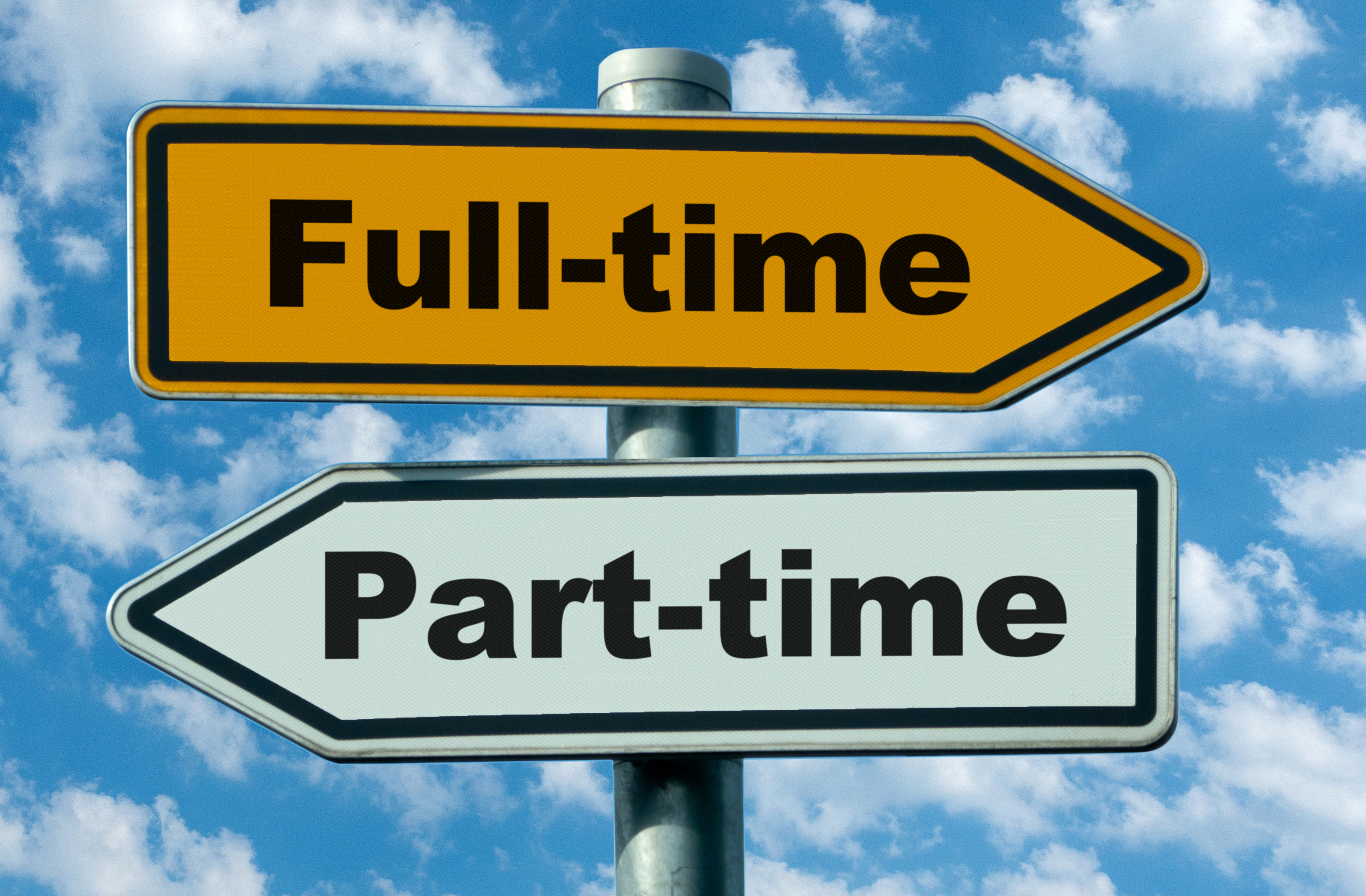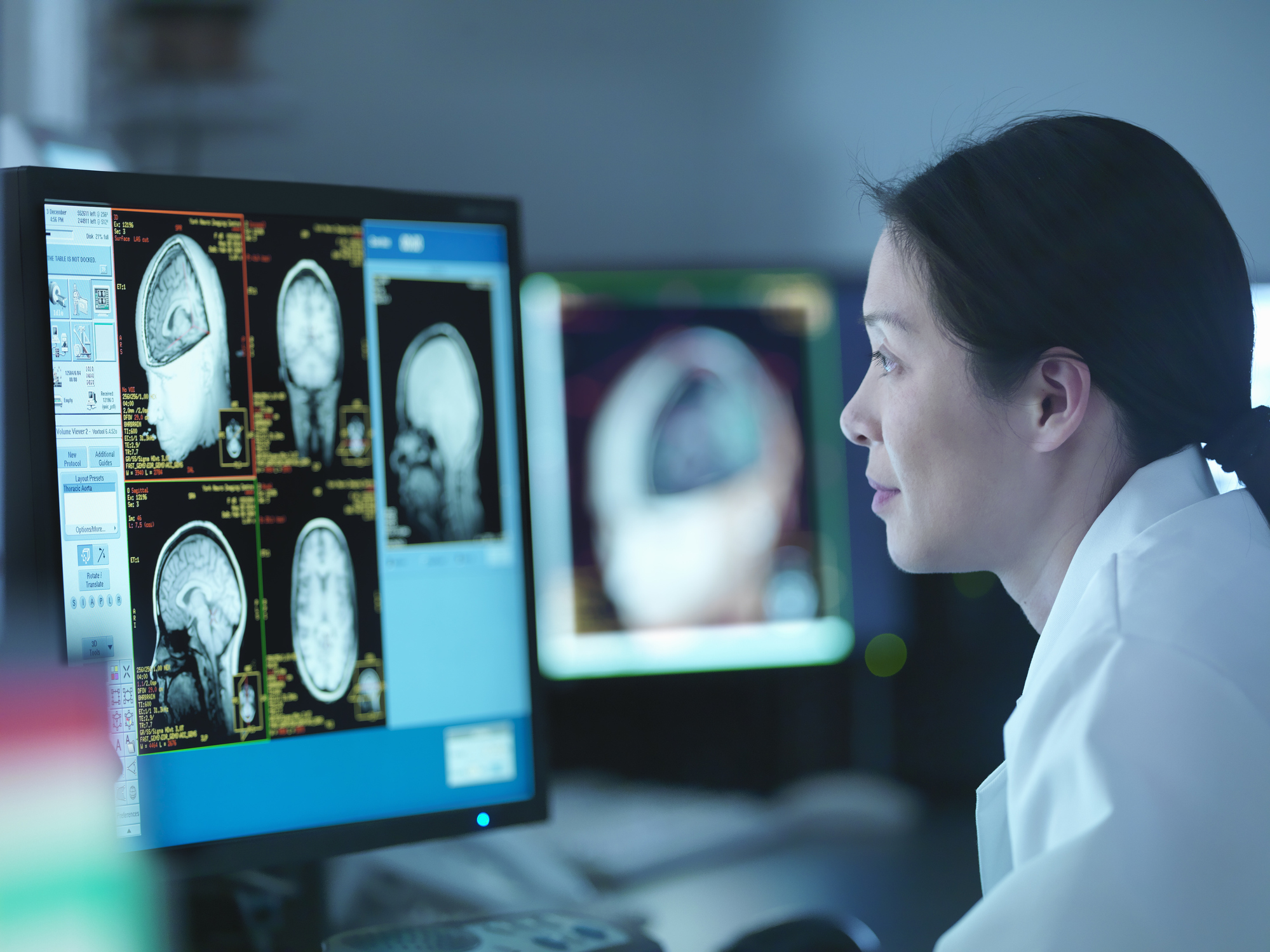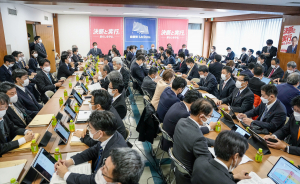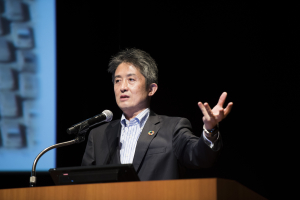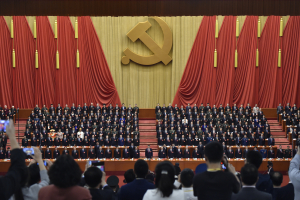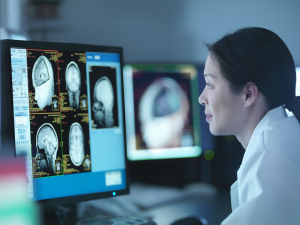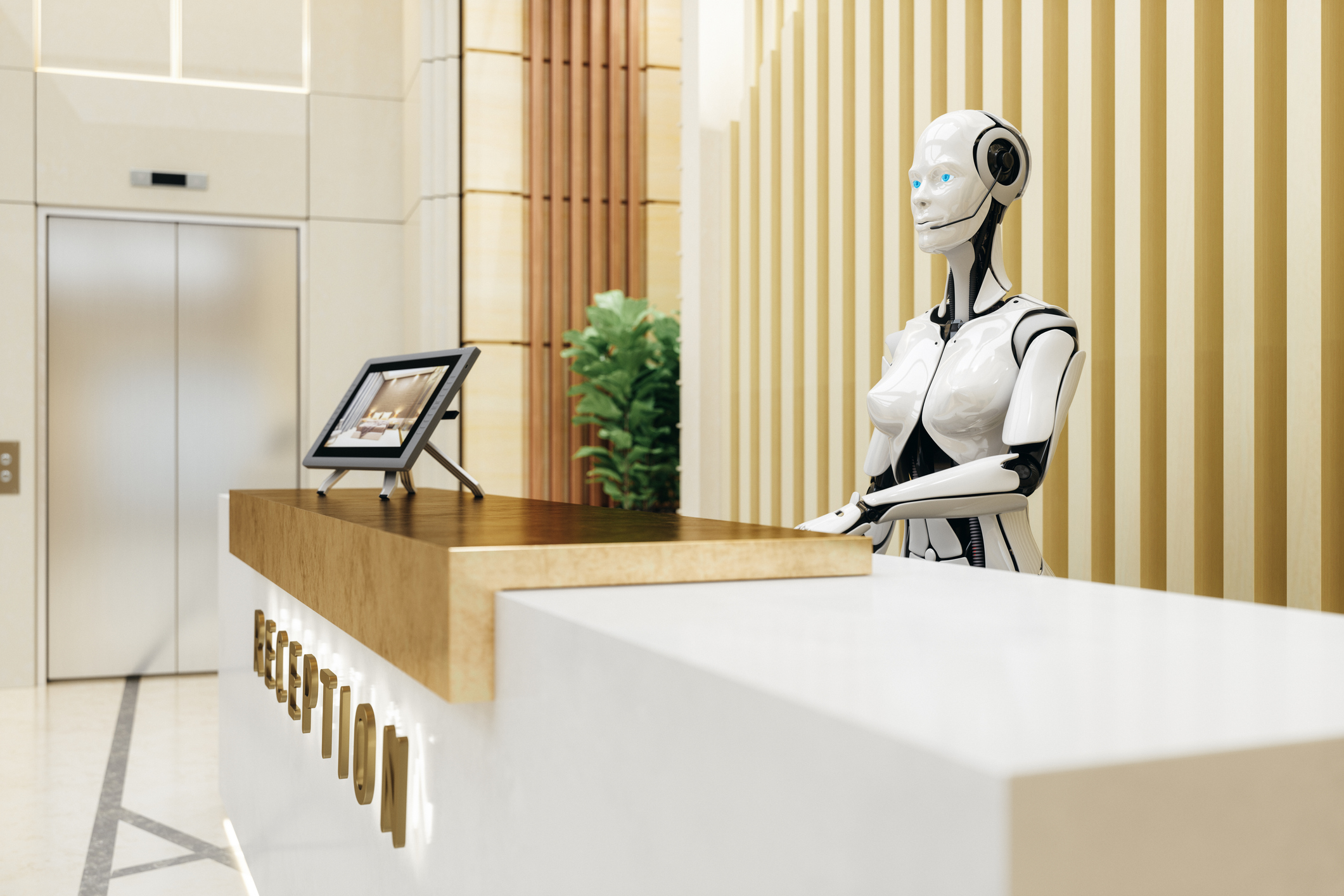
Can a Robot Tax Help Narrow the Social Divide?
June 28, 2022
R-2022-008E
How can we reap the benefits of fuller automation without exacerbating social inequality? One novel idea is to introduce a tax on robots. A number of approaches have been proposed, as Shigeki Morinobu explains, but each must first clear formidable technical hurdles.
* * *
In 2017, Microsoft founder Bill Gates proposed introducing a “robot tax” that would temporarily slow the pace of automation and whose revenue could be used to “finance jobs taking care of elderly people or working with kids in schools, for which needs are unmet and to which humans are particularly well suited.”[1] Since then, many researchers in the United States and other countries have weighed in on the idea, publishing proposals and findings on how such a tax might work in reality.
Growing Automation Anxiety
What gave rise to this novel proposal? The first factor was a growing sense of alarm that the development of robots and artificial intelligence could seriously alter our economy and society in the years to come. Indeed, some such changes are already unfolding. I have personally grown used to having my room cleaned by my Roomba vacuum, giving spoken instructions to devices via the Siri communications tool, and using machine translation services. As technology develops, robots and AI may even be able to perform jobs that require specialized skills and knowledge, providing services like medical consultations and diagnosis, legal advice, and translation and interpreting. There is a growing sense of anxiety about what the future portends.
A second worry is the prospect of further social polarization. Wealth could become concentrated in the hands of those providing the ideas and capital for the development and use of AI, along with a small elite of managers with the skills to harness the technology, while the situation for the majority of other workers displaced by technology becomes increasingly bleak. The social divide could be exacerbated as disparities grow between the haves and the have-nots.
To prevent technological progress from tearing our societies apart, we must, in the short term, strengthen social safety nets to support workers who lose their jobs, and in the longer term, we will need to enhance educational and vocational training opportunities for work that only humans can perform.
Needless to say, expanding safety nets and offering retraining will both require considerable fiscal resources. There are already concerns about safety-net inadequacies for workers in the expanding gig economy, prompting some to call for a basic income that would guarantee a minimum standard of living to everyone. (See my “Using Refundable Tax Credits to Offer Sustained Pandemic Relief” on this website.)
This was the context that gave rise to the idea of a robot tax, which could slow down the pace of automation, at least temporarily, and give policymakers time to secure the resources for needed countermeasures. It is thus much more than just a tax proposal; it entails rethinking the role of public policy in an age when AI and robots are having an increasingly large impact on our lives.
The International Monetary Fund recently published a working paper on the implications of the new technology. The paper notes that while wider use of automation raises productivity and output, it also exacerbates inequality. “Thus, exploring how its benefits and costs could be more widely shared in society,” it points out, “is a highly relevant analytical and policy question.”
The robot tax debate therefore provides an opportunity to explore the extent to which we want AI and robots to encroach on our lives and to determine how the costs of such coexistence should be borne (and by whom). The issue goes to the heart of what we want public policy to address in the digital society of the future.
Are Robots Taking People’s Jobs?
The first question we should address is whether AI and robots really represent a dystopian threat. In other words, which workers are at risk of losing their jobs in the short, medium, and long term, and how will this come about? Opinions differ widely even among specialists, however, on the likely impact of the new technology.[2] A related question is whether the loss of jobs to automation will lead to a drop in government revenue from income tax and social insurance premiums.
Optimists maintain that technological progress has historically led to the creation of new jobs and that there is no reason to believe that AI and robotics will be an exception. Alarmist concerns about social collapse, they contend, are not backed by evidence.
But more pessimistic analysts point out that the new technology differs in important ways from the mechanization and automation of the past, as it is being applied in an unprecedentedly wide range of settings, from assembly robots in factories to self-checkout registers in supermarkets and other retail outlets. These diverse applications, they say, will have a profound impact on employment. And it will take years for workers to acquire the skills and knowledge to compete against these technologies, with many people possibly remaining without work for years.
In 2015, Nomura Research Institute conducted a joint research project with Michael Osborne, professor of machine learning at the University of Oxford, and found that around 49% of the jobs done by people in Japan today could be replace by AI or robots within the next 10 to 20 years.[3] Their findings sent shockwaves through Japanese industry.
While the full impact of new technology on employment remains to be seen, even the optimists acknowledge the need to ensure that the added value created does not disproportionately flow into the hands of a few. There is also universal agreement on the importance of professional training and education to enhance the skills of human workers and the need to secure the necessary funding for this. I will address these two points below.
Robot Tax Proposals
Several proposals have been put forward for a robot tax. The first is for a kind of income tax levied on a robot’s hypothetical “salary,” based on calculations of the robot’s productivity and the wages that would be paid to a human worker doing the same job. The proposal is easy to understand, but calculating a robot’s pay would be much harder. Is it even feasible to calculate the productivity of robots, when technology continues to evolve on an almost day-to-day basis? There is also the risk of double taxation, since the company that owns and uses the robots is already taxed for any profits it makes.
Interestingly, an idea for a robot tax whose revenue would be used to retrain workers displaced by new technology was rejected by the European Parliament during a 2017debate on the legal and ethical implications of artificial intelligence.
The second robot tax proposal is for an asset tax. The value of robots would be assessed according to the income they generate and taxed accordingly. This is akin to a property tax, which is based on an evaluation of depreciable assets. But this proposal, too, has been criticized for the arbitrary nature of assumed interest rates that would be used in calculating future profits.
Creating a new income or fixed asset tax requires clear legal definitions for at least five items: taxable entities, taxable property, attribution of taxable property, standard taxable value, and tax rates. Particularly important will be a precise, legal definition of a “robot,” including whether it is entitled to legal personhood independent of its owner. Any ambiguity would leave the door open to unfairness and tax evasion. If only commercial robots are subject to the tax, for example, where does one draw the line between those strictly for industrial purposes and others, like cleaning robots, that are used in the home? Categorizing robots by use could prove to be a complicated task.
A third proposal calls for a “markup” corporate tax to be levied on excess profits generated when robots and AI are used to enhance market power. This has the advantage of being able to sidestep the difficulties the other two proposals face in establishing a legal definition for or assessing the “wages” of robots.
It is an approach resembling the OECD’s two-pillar solution for taxes in a digital economy, on which basic agreement was reached in autumn 2021. I proposed similar ideas in a paper published in 2019.[4] Such a tax, though, would need an international consensus and thoroughgoing discussions at the OECD.
Maximizing Benefits while Reducing Inequality
In July 2021, the IMF published a working paper titled “For the Benefit of All: Fiscal Policies and Equity-Efficiency Trade-offs in the Age of Automation”[5] that examines the policies that would need to be implemented along with an AI or robot tax to maximize gains from automation while minimizing inequality.
The paper sees any new tax on AI and robots as a levy on capital and capital income and uses econometric model analysis techniques to a number of scenarios for the use of revenue from the tax, such as providing education and directly supplementing worker wages. The authors note that fiscal policies are needed that will “mitigate the adverse effects of technological progress while preserving its benefits.” For the robot tax, the paper uses models that were normalized to assume additional tax receipts of one percent of GDP, assuming a tax rate of 0.6% on robots and of 14.4% on capital income.
The IMF working paper sees AI and robots as exacerbating the problem of trade-offs between equality and efficiency. There is no guarantee that automation-driven technological progress will result in inclusive growth, and it is vital that appropriate fiscal policy interventions are made. Some fiscal policies could soften the adverse distributional impact at the cost of some output loss in the mid-to-long run. A fair balance, taking into account political and social preferences, should be sought.
A robot tax would be a tax on capital, it adds, and although this might have a positive impact on employment in the short term, in the medium to long term there is a risk that it would impact negatively on employment. It is vital to consider both the short- and long-term benefits and costs of policies over time. A markup tax on excess profit could enhance economic efficiency, and if the adverse impact of robot-augmented technological progress can be mitigated, it should be possible to reduce inequalities without major sacrifices in efficiency.
In conclusion, the authors state: “Lastly, the post-COVID era could see an acceleration in adoption of automation, making the policy implications of this paper much more prominent. On current trends, inequality would likely rise further and faster in the absence of policy interventions, and policymakers should respond swiftly. The fiscal policy effects and transmission channels highlighted in the paper should give some insights for policymakers when they calibrate policy packages to tackle the equity-efficiency trade-off caused by technological progress and protect people who are vulnerable to its side effects.”
Xavier Oberson, a Swiss expert in international tax law, ended a TED talk advocating a robot tax by musing that the day might come when robots refuse to pay their taxes—and, even worse, might try to force us to pay them instead.[6] He was joking, of course, but I do hope that the idea of a robot tax will spur fuller debate in Japan about the kind of fiscal policy we need for the coming era of ever-increasing automation.
References
Izumi, Jun’ya. (2021). “AI robotto-zei no giron o hajimeyo: Koyo o ubau AI robotto kara nora AI robotto made.” Journal of Chiba University of Commerce 59(1), pp. 21–51.
Guerreiro, Joao, Sergio Rebelo, and Pedro Teles. (2022). “Should Robots Be Taxed?” Review of Economic Studies 89(1), pp. 279–311.
[1] “The Robot That Takes Your Job Should Pay Taxes, Says Bill Gates,” Quartz. 2017-2-18. https://qz.com/911968/bill-gates-the-robot-that-takes-your-job-should-pay-taxes/.
[2] Georg Graetz and Guy Michaels, “Robots at Work,” Review of Economics and Statistics. 2018, 100(5), pp. 753–68.
[3] “Nihon no rodo jinko no 49% ga jinko chino ya robotto-to de daitai kano ni: 601 shu no shokugyo-goto ni, konpyuta gijutsu ni yoru daitai kakuritsu o shisan” (49% of the Working Population in Japan Replaceable by AI and Robots: Computer Analysis Calculates Proportion of Jobs at Risk for 601 job types), Nomura Research Institute. December 2, 2015. https://www.nri.com/-/media/Corporate/jp/Files/PDF/news/newsrelease/cc/2015/151202_1.pdf.
[4] Shigeki Morinobu, “AI jidai no zeisei o kangaeru: Robotto takkusu” (Tax Systems in the Age of AI: Robot tax), Degitaru keizai to zei: AI jidai no tomi o meguru kobo (The Digital Economy and Tax: Tussling over Wealth in the AI Age), Nihon Keizai Shimbun Shuppan-sha, 2019.
[5] International Monetary Fund, “For the Benefit of All: Fiscal Policies and Equity-Efficiency Trade-offs in the Age of Automation,” 2021, Working Paper No. 2021/187. https://www.imf.org/-/media/Files/Publications/WP/2021/English/wpiea2021187-print-pdf.ashx.
[6] “Taxing Robots: A Solution for the Future,” Xavier Oberson, TED x Geneva, June 17, 2018, https://www.youtube.com/watch?v=7P9o1WBnM3E.




